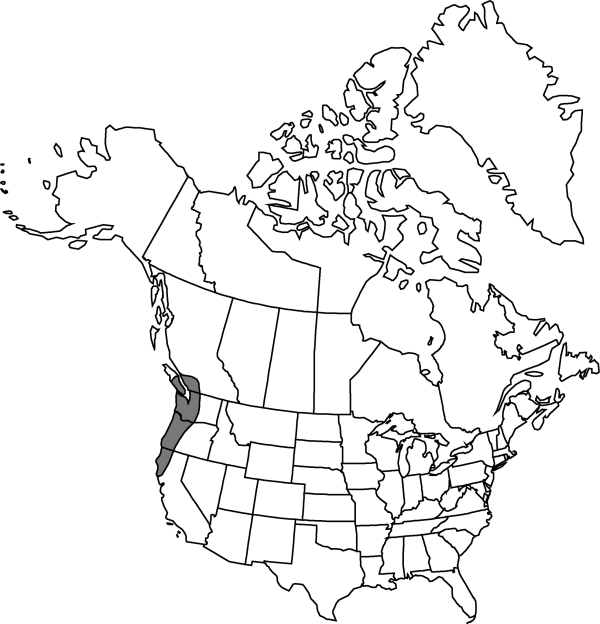Montia howellii
Proc. Amer. Acad. Arts 18: 191. 1883.
Common names: Howell’s montia
Endemic
Synonyms: Claytonia howellii (S. Watson) Piper Maxia howellii (S. Watson) Ö. Nilsson Montiastrum howellii (S. Watson) Rydberg
Treatment appears in FNA Volume 4. Mentioned on page 488.
Plants annual, not rhizomatous, stoloniferous, or bulbiferous. Stems decumbent, freely branching or simple, 1–10 cm, often rooting at nodes, forming small, loose mats. Leaves alternate, not distinctly petiolate, with clasping leaf sheaths; blade linear, 5–25 × 1–2 mm. Inflorescences axillary, 1-bracteate; bract minute, scarious. Flowers 2–8; sepals 1–2 mm; petals 2–5, often absent, white, 0.7–1.5 mm; stamens (2–)3(–5), anther pink. Seeds 0.5–1 mm, tuberculate; elaiosome minute, shorter than 0.5 mm.
Phenology: Flowering spring.
Habitat: Moist woods
Elevation: 0-500 m
Distribution

B.C., Calif., Oreg., Wash.
Discussion
Selected References
None.
Lower Taxa
None.